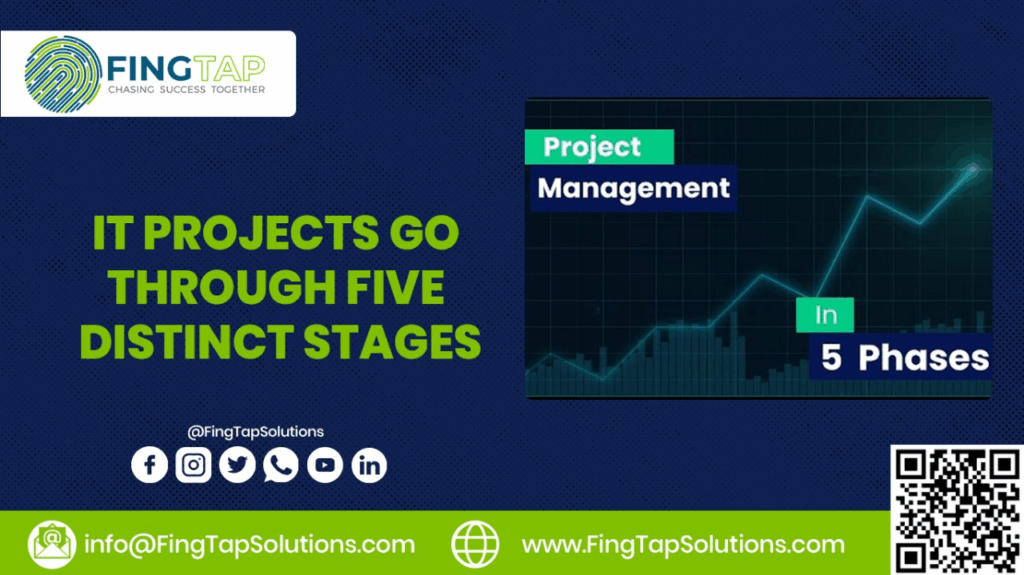IT Project Management is the process of arranging, allocating, and assigning accountability for achieving an organization’s particular information technology (IT) objective. Effective Project Management is the key to successfully guiding the complexity of software development, hardware installations, network upgrades, and other technology-driven initiatives. Successful IT project management must strike a balance between the art of leadership and in management part.
In this article, we will discuss what is IT project management and its importance, the 7C’s of project Management. Tips for project management for beginners and all the important things that project managers must know.
The most important thing in project management is 7’Cs
The 7 C’s of Project Management:
Project managers in the IT sector must consider seven critical dimensions (7 C’s) for project success:
Customers: Keep your customers your priority by deeply understanding their needs and Your project goals must meet the organizational Objectives
Competitors: Always stay updated with new technology trends by analyzing the Competitors, identifying new IT trends, challenges, and problem-solving solutions.
Capabilities: Assess and build your team’s strengths, identifying skill gaps, and investing in training to ensure preparing for project challenges.
Capital: Financial resources must be managed efficiently in budget constraints, wisely using resources, and justifying additional expenses to stakeholders.
Channels: Establish effective communication channels within the team and with stakeholders that can build transparency and trust.
Communication: For transferring difficult Technical details to both technical and nontechnical team member strong communication is strongly required
Coordination: Compliment the efforts of team members to achieve project goals, ensuring smooth collaboration and progress.
The Art and Science of IT Project Management:

Effective communication, vision, and interpersonal skills are combined with an in-depth understanding of methodology, tools, analysis, and problem-solving to create a delicate balance between leadership and management that is possessed by successful IT project managers. To succeed in the field of information technology, one must have a greater understanding of the technology under development.
To manage the IT project the beginners must know the following Tips
Project Management Tips for Beginners:
Beginners in IT project management, consider the following fundamental tips:
Identify Risks: Expect potential challenges, and plan ways to reduce risks before they become major hurdles.
Regular Team Meetings: Build unity and shared responsibility through regular team meetings, conveying concerns, sharing updates, and keeping everyone on the path.
Effective Communication: Clear and short communication is the key to successful project management . Make sure the information is transferred to all stakeholders properly
Establish SMART Goals: Establish clear direction and performance standards by setting goals that are Specific, Measurable, Achievable, Relevant, and Time-bound.
Access the Project Regularly: Frequent Assessment allows for course corrections. Keeping insight on continuous improvements makes it possible for your Project stay on track.
Support Project Management Methodology: Embrace a structured methodology for organized tasks, effective risk management, and systematic goal achievement.
Understand Project Management Fundamentals: To make informed decision believe on concept like the triple constraints theory—scope, time, and budget
Allow for Feedback: Allow everyone in your team to give feedback that can make improvements and give more ideas.
Achieve Milestones: Acknowledging and celebrating successes promotes teamwork and motivation.
Time Management: Set deadlines for your project, prioritize tasks, and use resources wisely within budget for effective time management.
Trust Your Team Members: Give power to your team by trusting their abilities, and avoiding mismanagement, which can reduce productivity and team spirit.
Accept Automation: Reduce the chance of error and save time by reducing repetitive processes with the use of automation solutions.
5 Stages of Project Management
IT projects go through five distinct stages:

Initiation: figuring out what projects need, matching those needs to company objectives, and getting the required approvals.
Planning: Make a plan in which you create the details of tasks, deadlines, and distribution of resources.
Execution: The idea that you created must be implemented.
Monitoring & Control: Monitoring project progress regularly, making any adjustments, and making that the plan is followed.
Closure: After all stages, it’s time to complete the project and handle the final product to the stakeholder and receive its acceptance
Closure: Completing the project, delivering the final product, and obtaining stakeholder approval.
The Triple Constraint Theory: Scope, Time, Budget:

The project’s scope, costs, and time all affect its success, according to the Triple Constraints of Project Management. By balancing these three limitations through choices, a project manager can keep control of the triple constraints.
In conclusion, The seven C’s of project management, leadership and management abilities, basic advice for beginners, knowledge of project phases, and the triple constraint theory must all be combined thoroughly for an understanding of IT project management. These guidelines can be used for software development or infrastructure management to help you succeed in IT project management.

